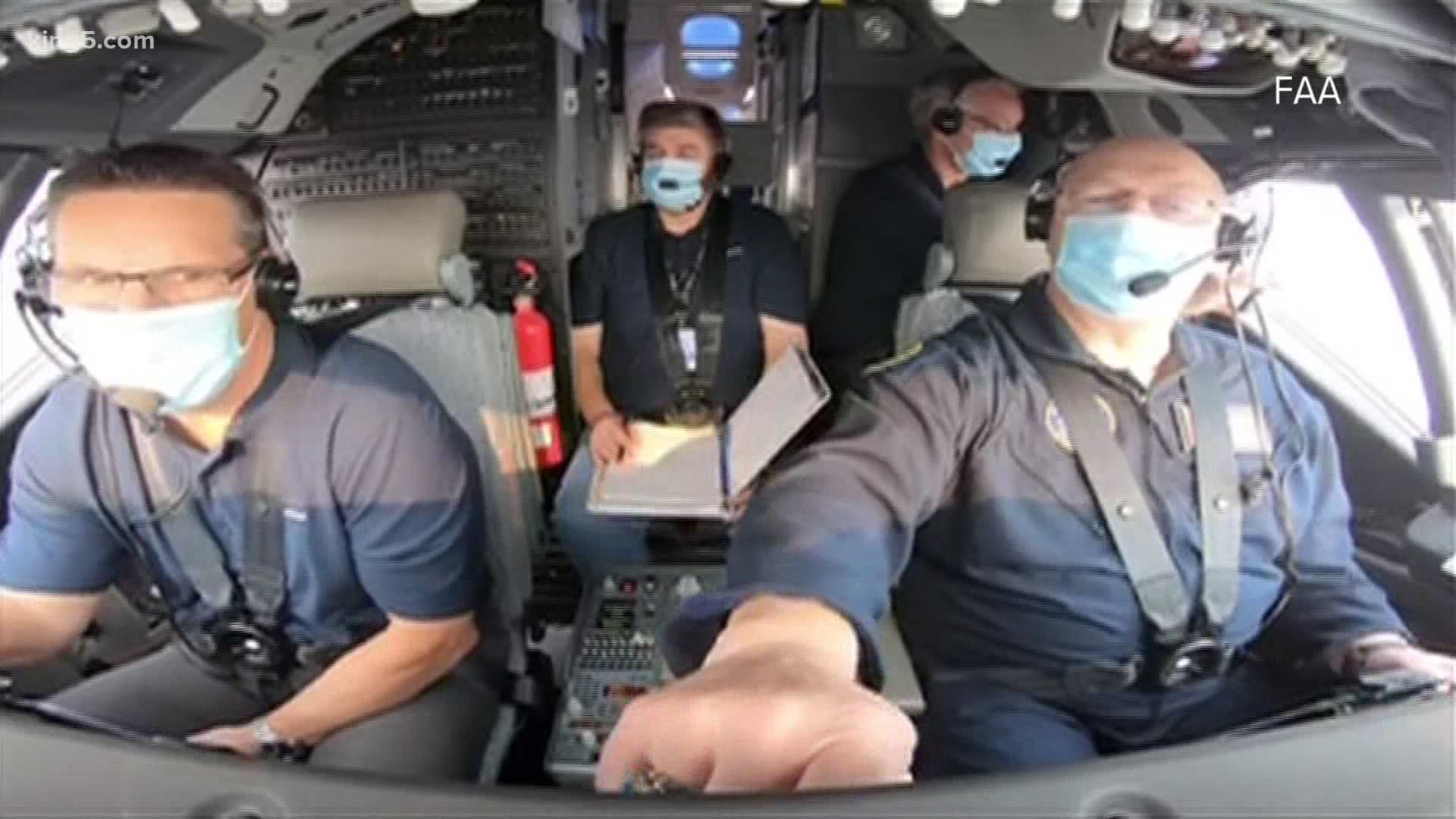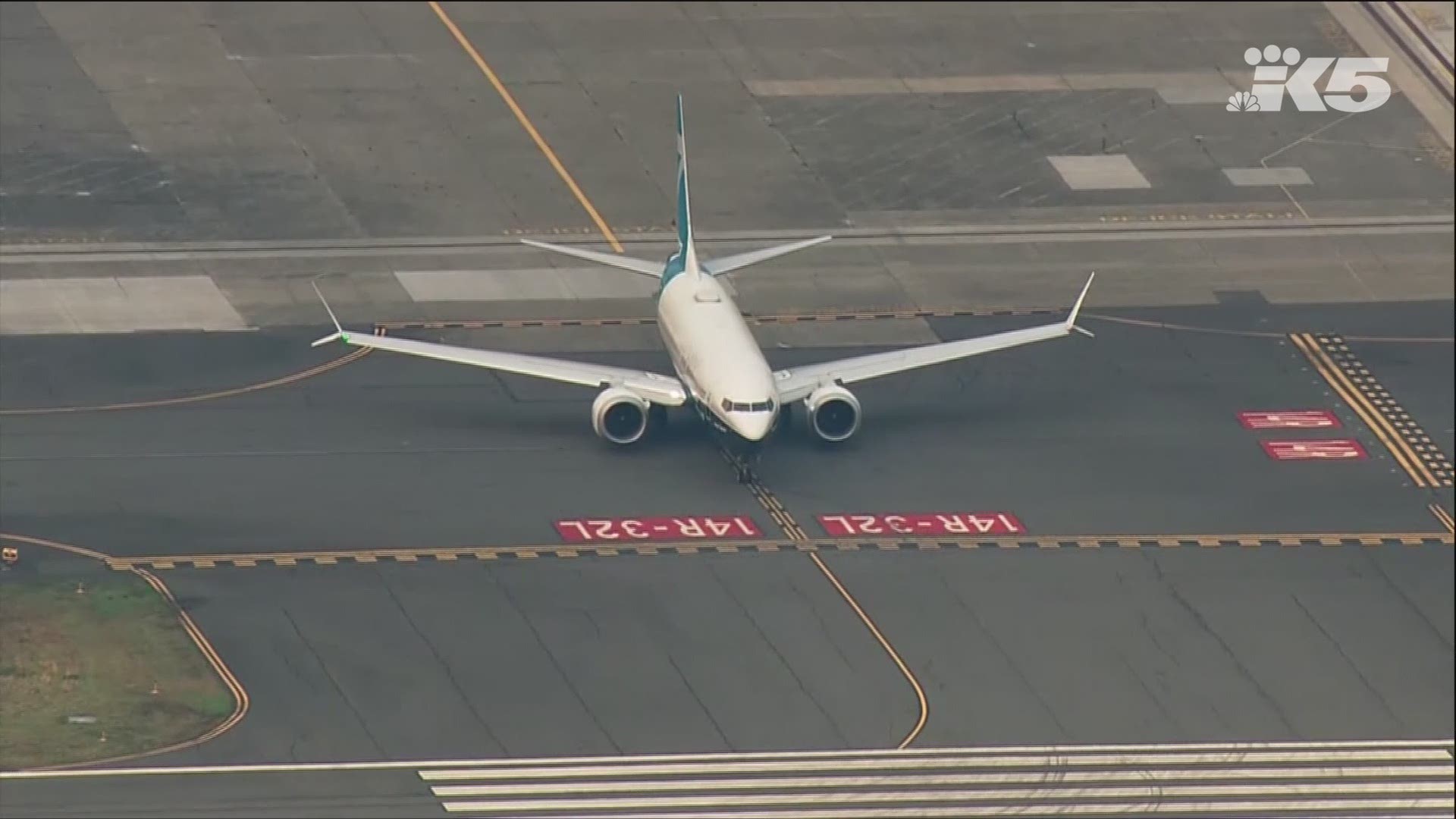SEATTLE — The head of the Federal Aviation Administration conducted a test flight of Boeing’s revamped 737 MAX jetliner on Wednesday as the agency considers whether to allow the plane to return to flight after two deadly crashes.
FAA Administrator Stephen Dickson, a pilot who flew for the military and Delta Air Lines, sat in the captain’s seat during a two-hour flight. An FAA spokesman said Boeing pilots were also on the plane when it took off from King County International Airport.
Dickson addressed media questions Wednesday morning about the flight and where the FAA stands as several more milestones remain to be worked through before the 18-month-old grounding is lifted.
During the press conference, Dickson said he wanted to be clear that his test flight Wednesday was separate from the official certification process underway by the FAA. Last year, Dickson said he would personally fly the 737 MAX and not sign off on its return until he was “comfortable putting his family on it.”
Dickson said Wednesday he took the same training that the Joint Operations Evaluation Board recently looked at during their work at the London Gatwick Airport, followed by a session in a 737 MAX simulator. Deputy Administrator Dan Elwell, another top FAA official, also went through the simulator training.
“It was important to me to experience firsthand the training and the handling of the aircraft so I can have the most complete understanding possible as we move forward with this process,” said Dickson.
The crew put the jet through repeated changes in direction, speed and altitude as it headed east over the Cascade Range into central Washington state, according to data from tracking site Flightradar24.com.
"I like what I saw [during the flight]," said Dickson. "Its been a constructive week. That doesn't mean I don't have some debrief items for the Boeing team and FAA team. I have some observations that I'm going to share with them. That's going to be incorporated into the process going forward.”
The MAX has been grounded since March 2019 following two deadly crashes. The crashes have been blamed on an automated anti-stall system that pushed the noses of the planes down based on faulty readings from sensors. Boeing hopes to win FAA approval later this year for changes it has made to flight-control software and computers.
“Not a day goes by that I and my colleagues don't think about the victims and their families and our solemn responsibility to get this right,” Dickson said Wednesday.
The FAA won't approve passenger service for the 737 MAX until the known safety issues that played a role in the two deadly crashes have been "adequately addressed."
“We're in the home stretch, but that doesn't mean we're going to take shortcuts to get it done by a certain date,” said Dickson.
In Washington, the House Transportation Committee approved legislation to change the way the FAA certifies new planes, including the agency’s reliance on employees of Boeing and other aircraft makers to perform key safety analysis.
The bill would not eliminate the FAA’s use of private-sector employees to review their own companies’ planes – lawmakers believe it would be too expensive for FAA to do the work, and that the aerospace companies have more technical expertise. Instead, the bill would give FAA approval over picking private-sector employees who perform safety analysis and allow civil penalties for companies that interfere with their work. Boeing whistleblowers complained of pressure to approve systems on the MAX.
The bill would also require plane manufacturers to tell the FAA, airlines and pilots about automated systems that can alter a plane’s path. Top FAA officials and most pilots did not know about the anti-stall system on the MAX, called MCAS, until after the first crash, in October 2018 in Indonesia. Less than five months later, another MAX crashed in Ethiopia. In all, 346 people died.
"Safety has to be the primary role for the FAA, and that's one of the concerns we had in our investigative report, that Boeing and the FAA were too close, and that needs to be separated,” said Rep. Rick Larsen, the Washington state Democrat who is chair of the Aviation Subcommittee.
“Those crashes were the inevitable culmination of stunning acts of omissions within Boeing and the Federal Aviation Administration,” said committee Chairman Peter DeFazio, D-Ore.
Rep. Garret Graves, R-La., a staunch defender of the FAA, said the agency represents “the gold standard” in aviation regulation but the crashes show the need for improvement.
The committee approved the bill by what appeared to be a unanimous voice vote. Rep. Paul Mitchell, R-Mich., left the meeting after complaining that lawmakers had only one day to read the bill, which he called an “absurd” rush for such a complex, technical subject.
The measure, based on recommendations from U.S. and international regulators and safety investigators, goes next to the full House. Its fate is uncertain, however. A similar bill was pulled from consideration in a Senate committee on Sept. 16, and Congress is rushing to adjourn so that lawmakers can go home and campaign for re-election.


